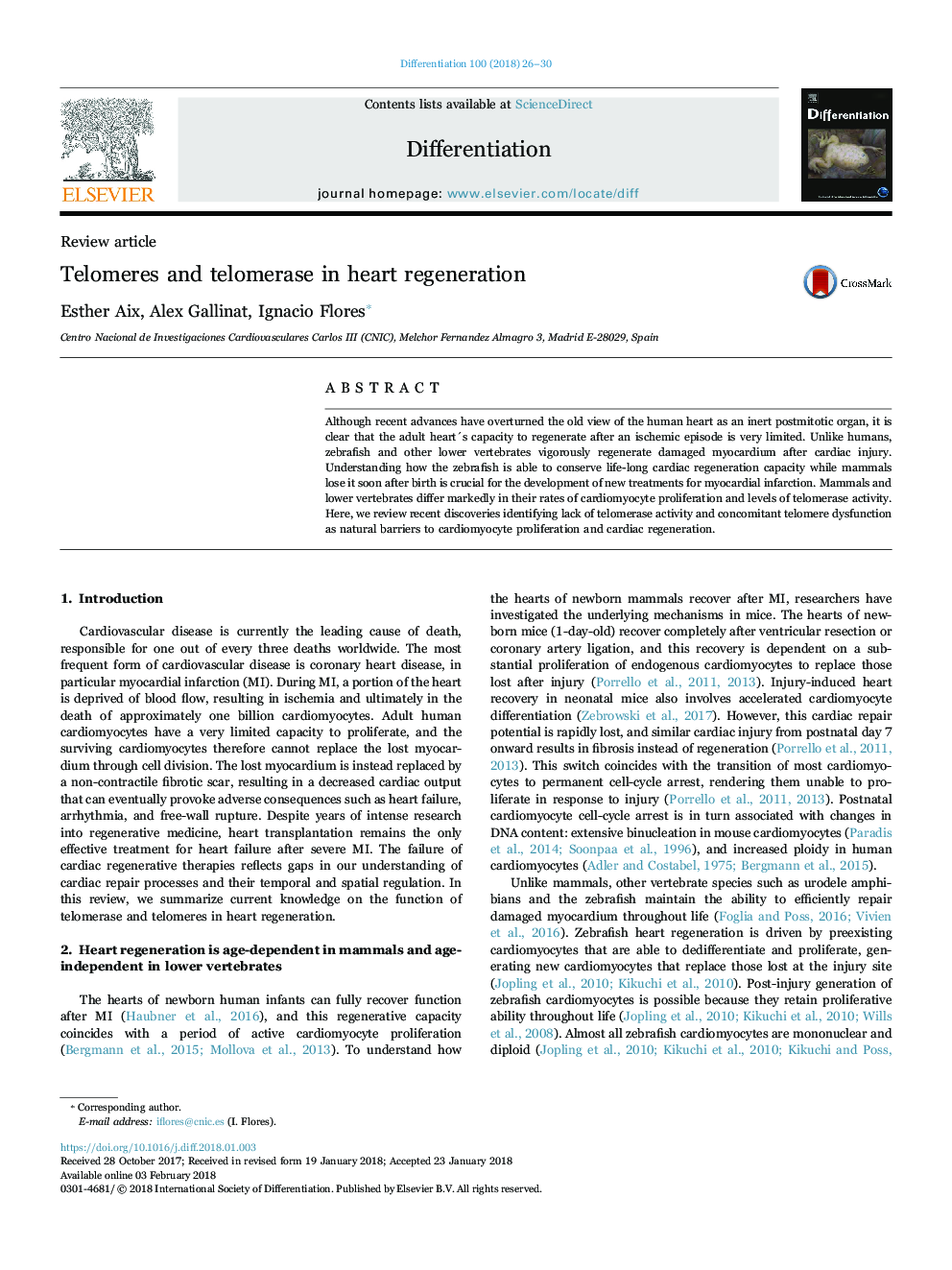| Article ID | Journal | Published Year | Pages | File Type |
|---|---|---|---|---|
| 8436226 | Differentiation | 2018 | 5 Pages |
Abstract
Although recent advances have overturned the old view of the human heart as an inert postmitotic organ, it is clear that the adult heart´s capacity to regenerate after an ischemic episode is very limited. Unlike humans, zebrafish and other lower vertebrates vigorously regenerate damaged myocardium after cardiac injury. Understanding how the zebrafish is able to conserve life-long cardiac regeneration capacity while mammals lose it soon after birth is crucial for the development of new treatments for myocardial infarction. Mammals and lower vertebrates differ markedly in their rates of cardiomyocyte proliferation and levels of telomerase activity. Here, we review recent discoveries identifying lack of telomerase activity and concomitant telomere dysfunction as natural barriers to cardiomyocyte proliferation and cardiac regeneration.
Related Topics
Life Sciences
Biochemistry, Genetics and Molecular Biology
Cancer Research
Authors
Esther Aix, Alex Gallinat, Ignacio Flores,
